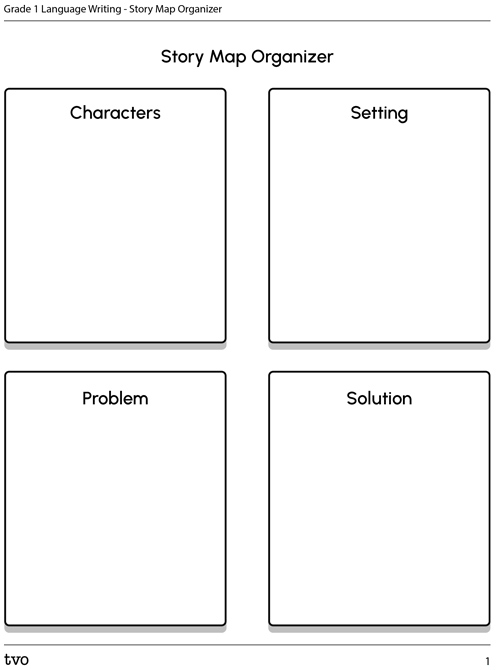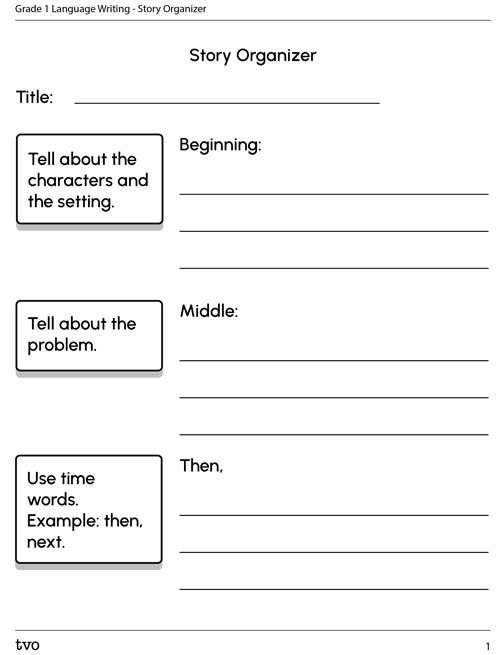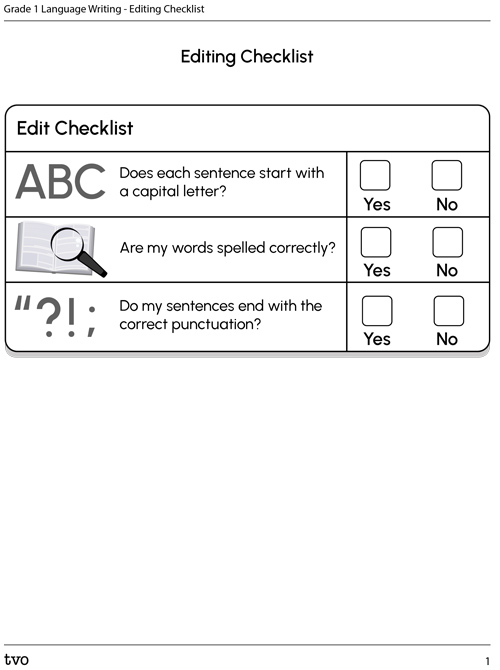Minds On
What’s your favourite story?
Fiction stories have a plot, setting, and characters that come from the imagination.
Nonfiction stories are about real people and true events.
Do you have a favourite story? What is it? Think about what makes a story your favourite.
- Is the story made up of fiction or nonfiction (real life)?
- Is it a story with interesting characters?
- Is the story easy to read or listen to and understand?
- Does the story have pictures?
There are many different kinds of stories. Some stories are short and others are long. Some stories are funny and some stories are meant to teach. Some stories are fiction and others are non-fiction.
There are many different ways to tell a story. A story can be written or told in pictures. A story can be told out loud or in a song.
Let’s examine some examples of stories.
Joel missed the bus
- character: Joel
- setting: bus stop
- problem: Joel missed the bus
- solution: Joel walks to school
The following video tells a story too! Let’s explore this episode, “Three Little Pigs,” from Numberblocks.
In this learning activity, we are going to learn how to write our own stories.
Narrative story
A story with a problem and a solution is called a narrative story.
A narrative story has:
- a beginning, middle, and end
- characters and setting
- problem and solution
Think back to your favourite story. Is it a narrative story?
Let’s sort some of our favourite stories.
Which stories are fiction? Which stories are nonfiction?
Action
Beginning, middle, and end
Every story has to have a beginning, middle, and an end. It is important for a story to be told in the right order to make sense.
Elements of a narrative story
There are 4 elements of a narrative story:
Searching for elements in a story
Let’s explore the following story, "Monster Story," by Lily to identify the characters, setting, problem, and solution.
Now try to answer the following questions:
- Who are the characters?
- What is the setting?
- What is the problem?
- What is the solution?
Student Success
Think-Pair-Share
If you can, work with a partner to try and identify the characters, setting, problem, and solution in the following story, "Monster Story," by Cristel.
Now try to answer the following questions:
- Who are the characters?
- What is the setting?
- What is the problem?
- What is the solution?
Note to teachers: See your teacher guide for collaboration tools, ideas and suggestions.
How to tell the story
The way a narrative story is organized is called the plot. A plot can be thought of as a roller coaster ride! First, the plot starts at the beginning or the bottom of the hill. Then from the middle to end of the roller coaster, the character fixes a problem. Finally, it’s time to get off the roller coaster. Do you want to ride it again?

Consolidation
Your turn!
Let’s join Bebe and Mo from Canada Crew as they learn about the weather and seasons.
Follow the writing process to write your own narrative story.
Choose one of the following topics to focus on your writing:
- the rained-out picnic
- lost in the fog
- too hot for my snowman
- your weather story idea
Before going through the steps in the writing process, brainstorm ideas for the writing process with your teacher and peers.
Brainstorm
Selecting a story
We have seen and listened to some different examples of stories. Think about a story you would like to tell.
- Who are the characters?
- Where does the story take place?
- What is the problem in the story?
- What is the solution?
Complete the Story Map Organizer in your notebook or use the following fillable and printable document to record your ideas. Then share your ideas with a partner.
Use the Story Organizer in your notebook or use the following fillable and printable document to brainstorm your ideas.
Revising: focus on content
When revising your work, you want to:
- read your work out loud
- find other words you might want to use
- make other changes so the writing is just right
- stay on one topic
You may also use the following checklist to help you with the revision process.

Narrative Writing Checklist
My story has:
A beginning with:
A middle with:
An end with:
If you wish to keep the checklist as a reference, press the ‘Activity’ button to access Narrative Writing Checklist.
Editing: focus on conventions
To help you move through the writing process, the following editing checklist may be helpful as you check your work.
Editing Checklist
Complete the Editing Checklist in your notebook or use the following fillable and printable document to help your revision process.
Student Success
Think-Pair-Share
Revise and edit
If possible, share your work with a partner. Read your work out loud. What did you like? What do you still wonder about?

Note to teachers: See your teacher guide for collaboration tools, ideas and suggestions.

Publishing: your turn to share your work!
It is time to review your story. Are you ready for publishing?
Does your story have:
Reflection
How do you feel about what you have learned in this activity? Which of the next four sentences best matches how you are feeling about your learning? Press the button that is beside this sentence.
I feel...
Now, record your ideas about your feelings using a voice recorder, speech-to-text, or writing tool.


